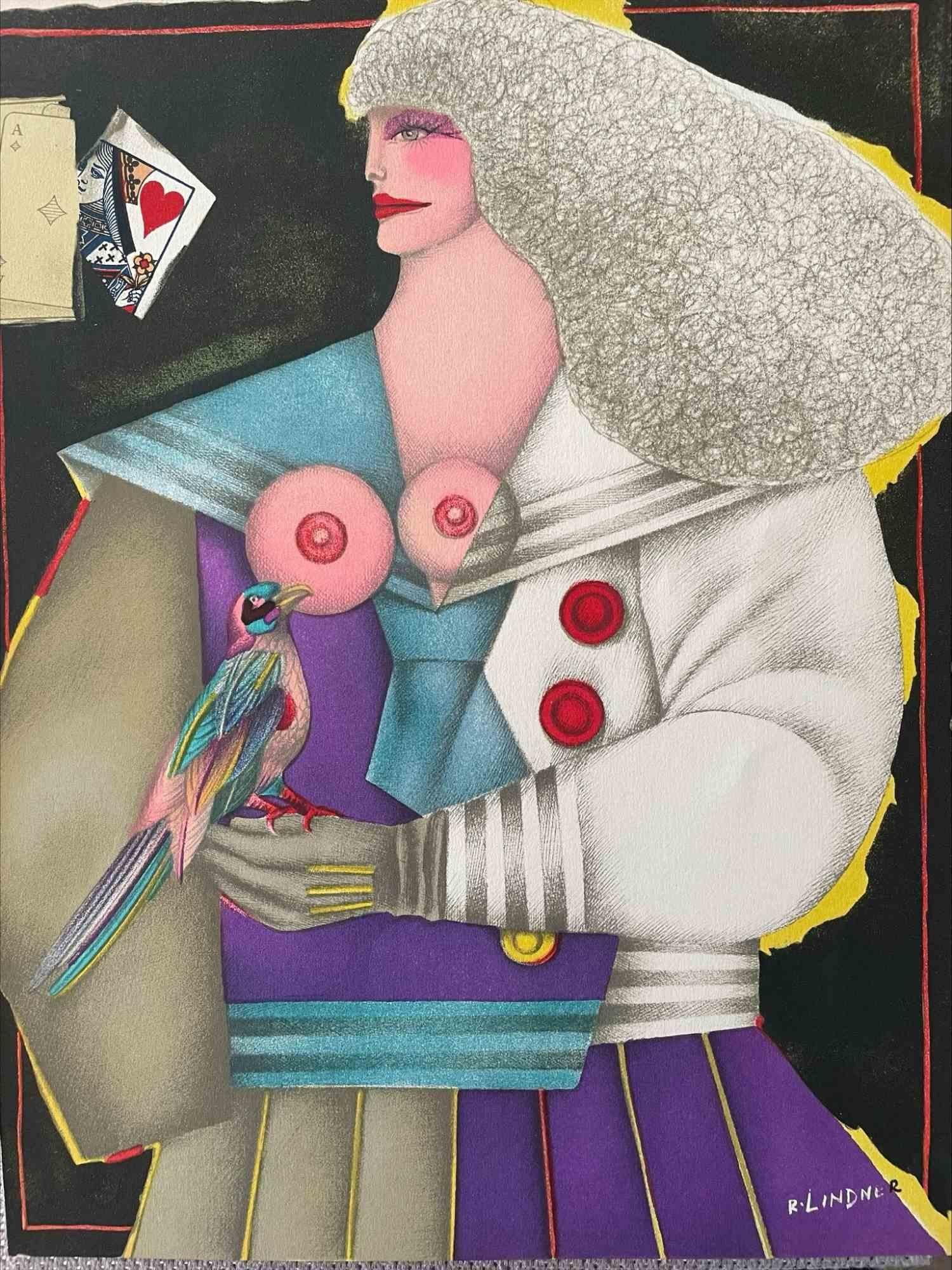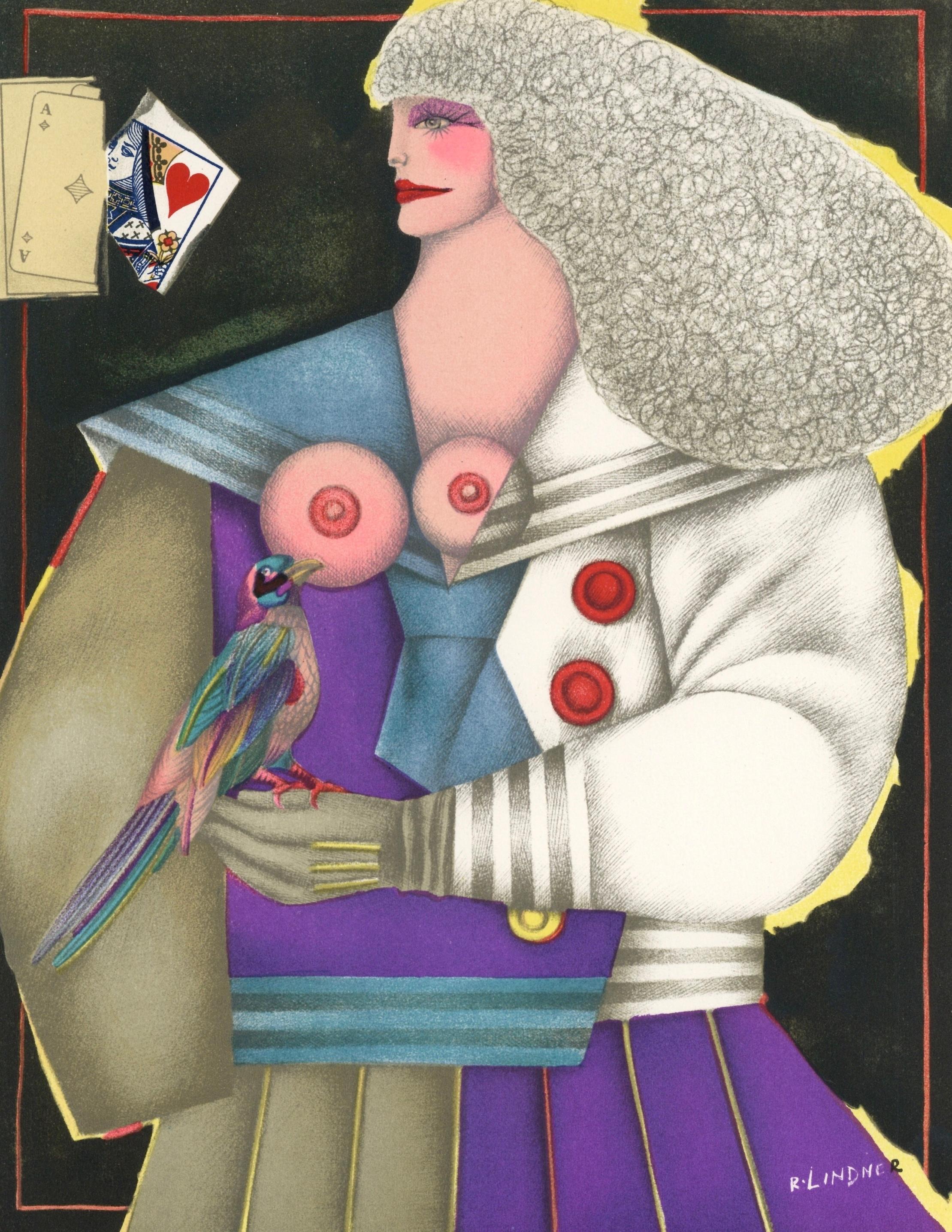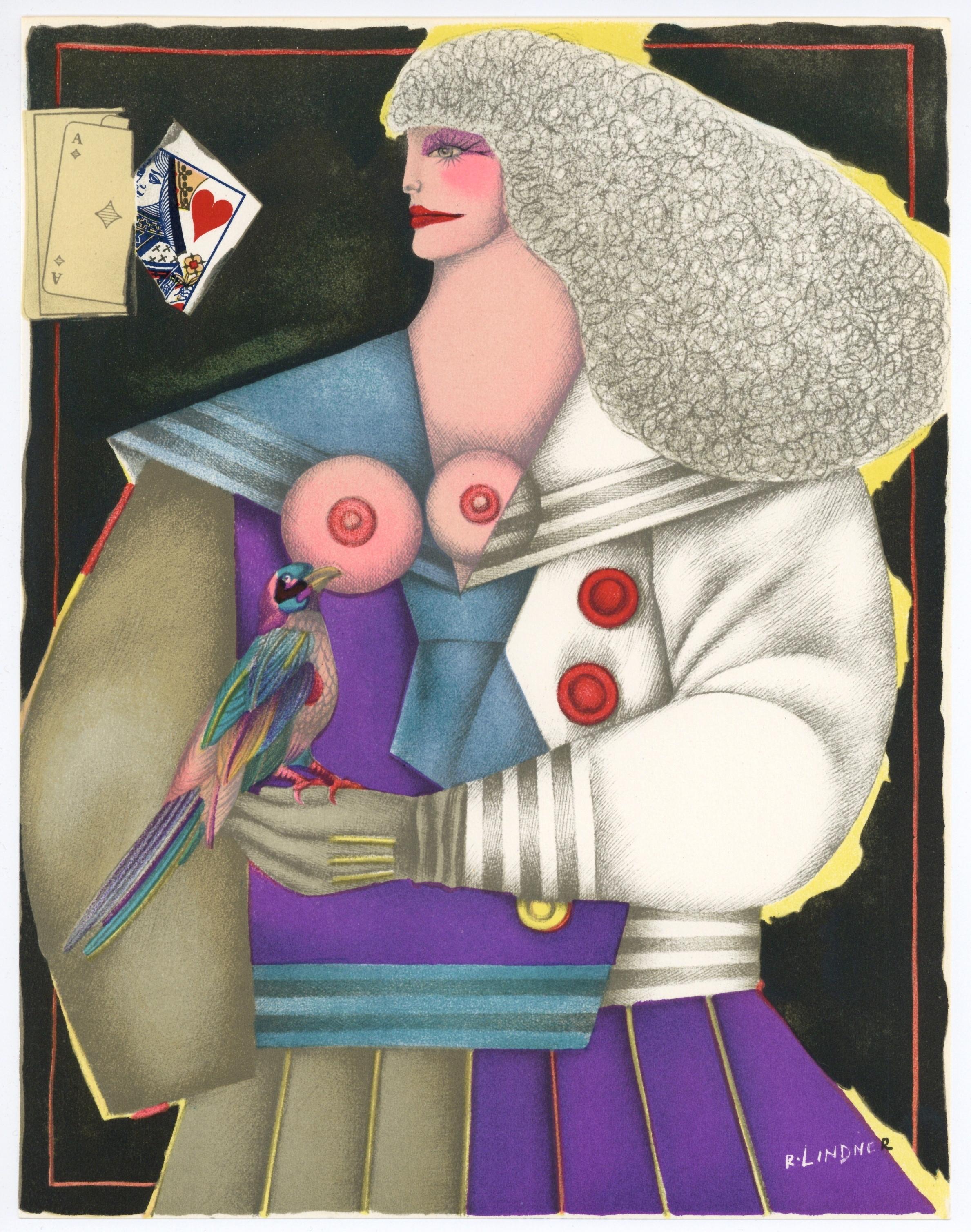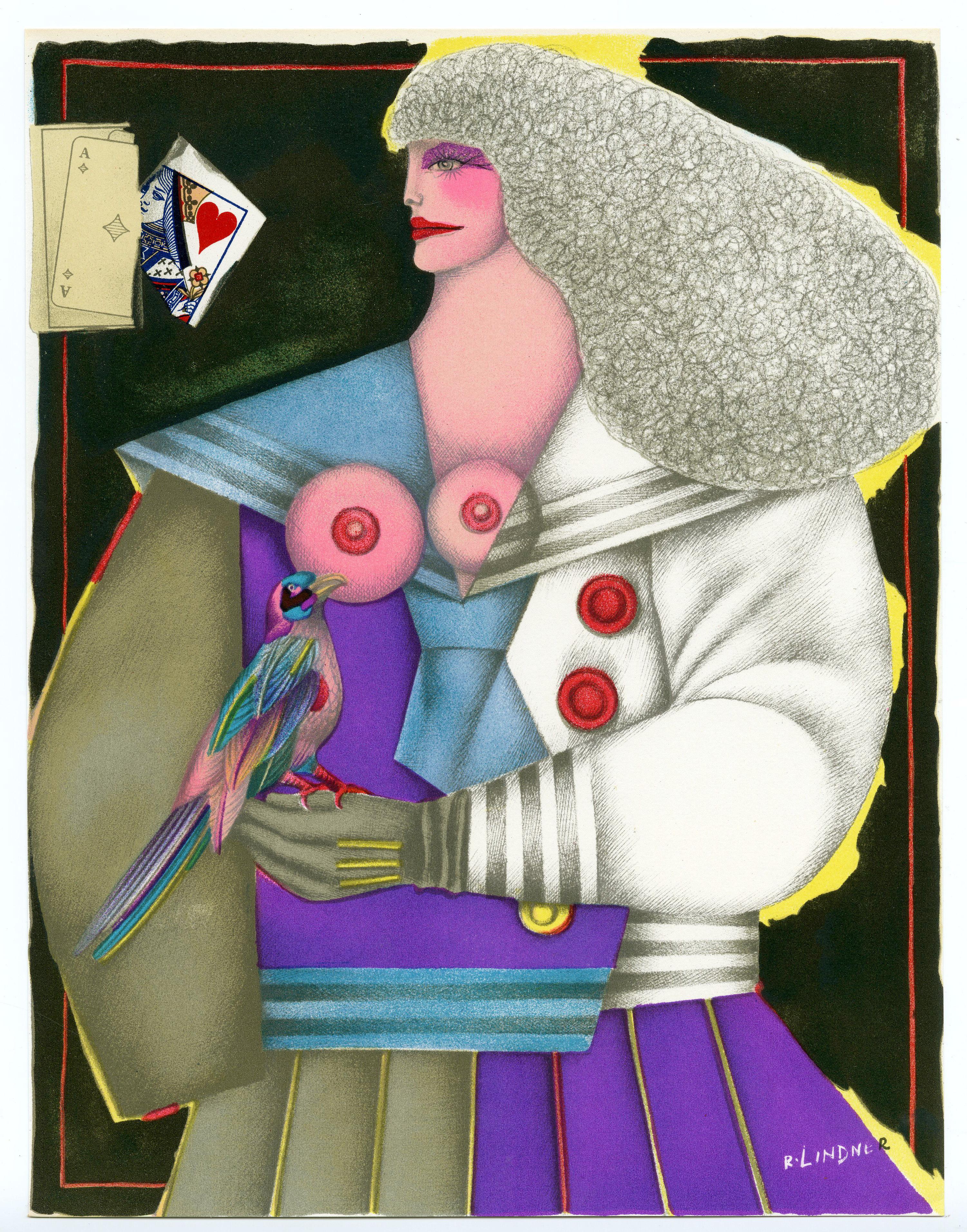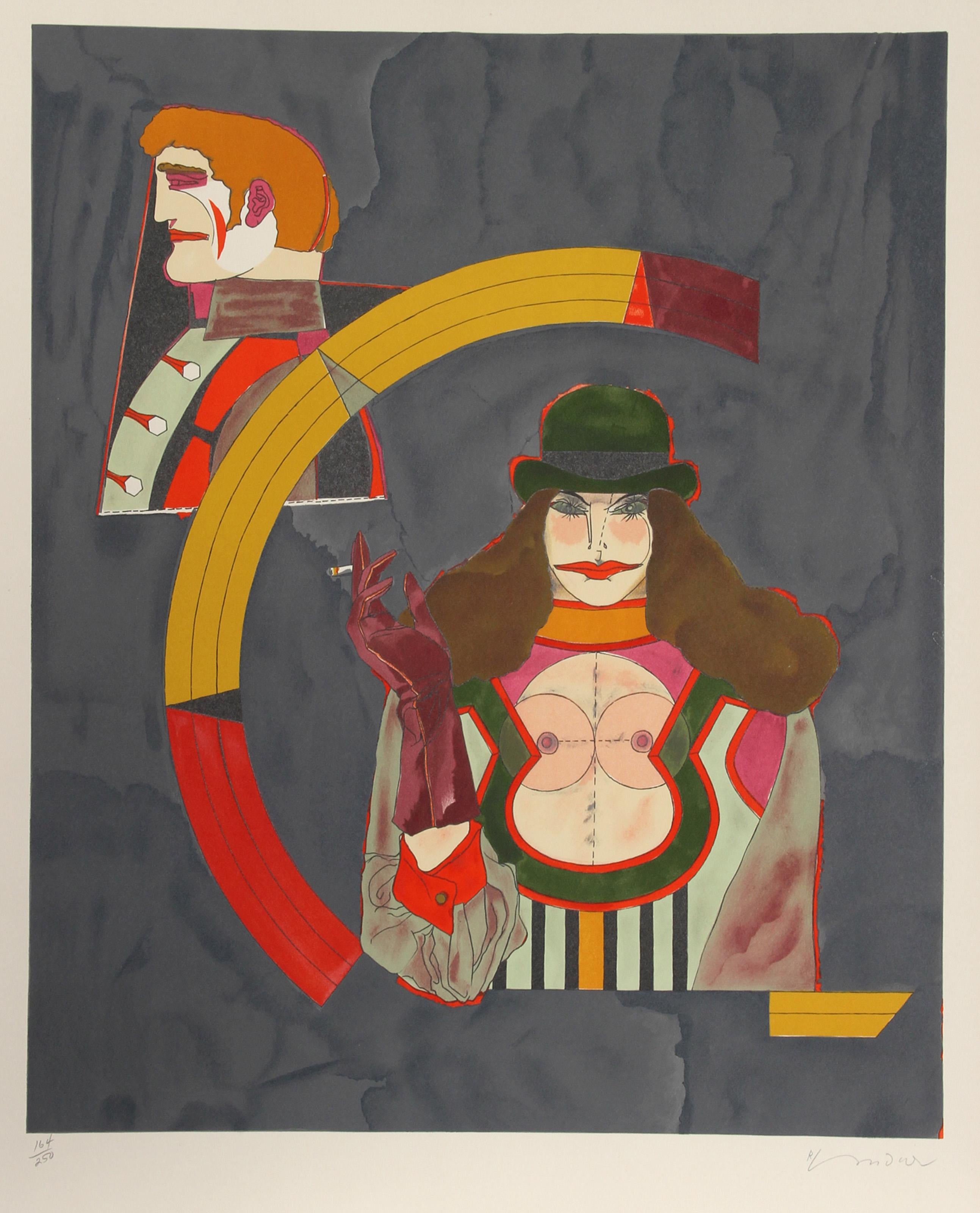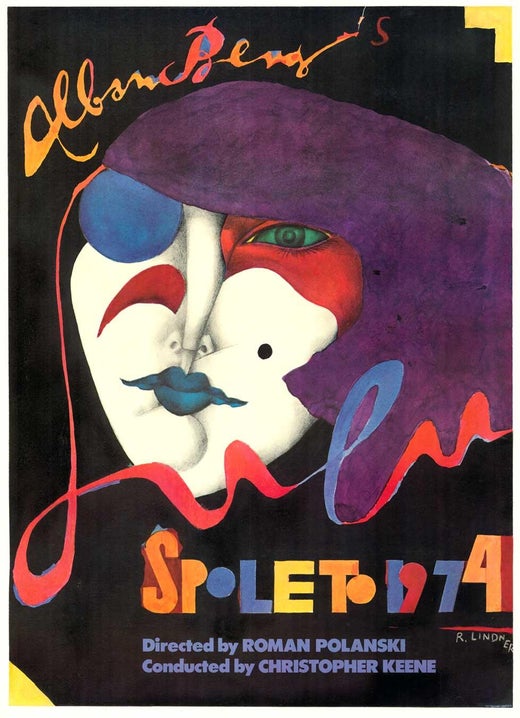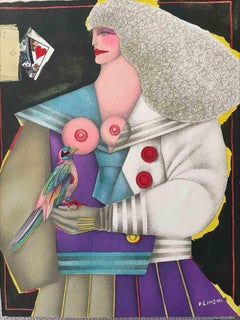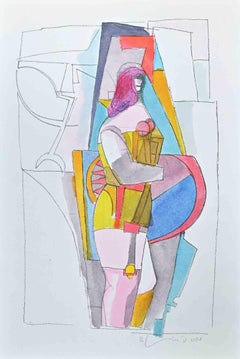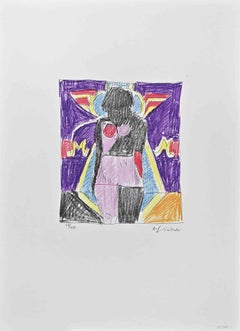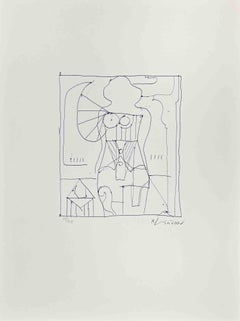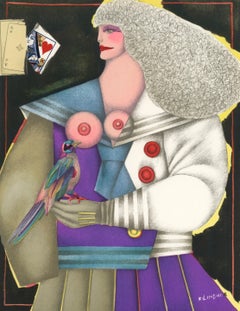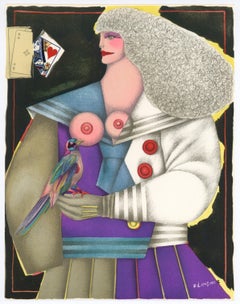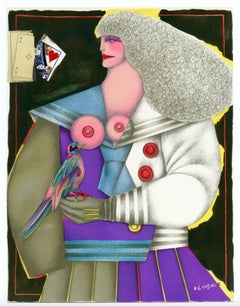Items Similar to Untitled - Original Lithograph by R. Lindner - 1974
Want more images or videos?
Request additional images or videos from the seller
1 of 2
Richard LindnerUntitled - Original Lithograph by R. Lindner - 19741974
1974
$406.14
$624.8335% Off
£298.25
£458.8435% Off
€338
€52035% Off
CA$559.16
CA$860.2535% Off
A$609.02
A$936.9535% Off
CHF 322.33
CHF 495.8935% Off
MX$7,451.50
MX$11,463.8535% Off
NOK 3,988.59
NOK 6,136.2935% Off
SEK 3,764.98
SEK 5,792.2835% Off
DKK 2,573.21
DKK 3,958.7935% Off
About the Item
Untitled from Le XX Siècle is an original artwork realized by Richard Lindner in 1974.
Original colored lithograph.
Good conditions. Printed by Mourlot, France.
This lithograph was realized by the artist in 1974 for éditions XXe Siècle - Le Surrealisme I - XLII - 74.
The artwork represents a colorful portrait of a woman with a parrot.
Richard Lindner (1901 – 1978) was a German-American painter known for his expressionistic exaggeration, Surrealist fantasy, and Cubist manipulations of form. He became known for erotic and enigmatic renderings, first based on memories from his childhood in Germany and later inspired by the vulgar, fetishistic aspects of life in New York. His harsh colors and highly defined outlines exaggerated the garishness of the streetwalkers, circus women, and men in uniform that became his favorite subjects. Overtones of Berlin’s cabaret culture of the 1930s infuse his style.
Gualtieri di San Lazzaro ( Giuseppe Papa, 1904-1974) editor and collector critic gave life to a major magazine of contemporary art: he founded and directed the magazine «XXe Siècle», published in Paris since 1938, dedicating each issue to a different theme of contemporary art and illustrating it with original graphics by masters such as Arp, Henri Laurens, Miró, Klee, Moore, Marino Marini, Magnelli, Picasso ecc.
- Creator:Richard Lindner (1901-1978, American)
- Creation Year:1974
- Dimensions:Height: 12.21 in (31 cm)Width: 9.26 in (23.5 cm)Depth: 0.08 in (2 mm)
- Medium:
- Movement & Style:
- Period:
- Framing:Framing Options Available
- Condition:Insurance may be requested by customers as additional service, contact us for more information.
- Gallery Location:Roma, IT
- Reference Number:Seller: M-1039131stDibs: LU65035213571
Richard Lindner
Richard Lindner (1901 – 1978) was a German-American painter. Lindner's mother was owner of a custom-fitting corset business and Richard Lindner grew up and studied at the Kunstgewerbeschule (Arts and Crafts School since 1940 Academy of Fine Arts). From 1924 to 1927 he lived in Munich and studied there from 1925 at the Kunstakademie. In 1927 Lindner moved to Berlin and stayed there until 1928, when he returned to Munich to become art director of a publishing firm. He remained in Munich until 1933, when he was forced to flee to Paris. Once in Paris, Lindner became politically engaged, sought contact with French artists and earned his living as a commercial artist. He was interned when World War II broke out in 1939 and later served in the French Army. In 1941, Lindner moved to the United States and worked in New York City as an illustrator of books and magazines. There he made contact with New York artists and German emigrants such as Albert Einstein, Marlene Dietrich, and Saul Steinberg. In 1948, Lindner became an American citizen. Lindner taught at a number of institutions including the Pratt Institute, Brooklyn, Hochschule fur bildende Kunste in Hamburg and Yale University School of Art and Architecture. His paintings often used the sexual symbolism of advertising and investigated definitions of gender roles in the media.
About the Seller
4.9
Platinum Seller
Premium sellers with a 4.7+ rating and 24-hour response times
1stDibs seller since 2017
7,705 sales on 1stDibs
Typical response time: 2 hours
- ShippingRetrieving quote...Shipping from: Roma, Italy
- Return Policy
Authenticity Guarantee
In the unlikely event there’s an issue with an item’s authenticity, contact us within 1 year for a full refund. DetailsMoney-Back Guarantee
If your item is not as described, is damaged in transit, or does not arrive, contact us within 7 days for a full refund. Details24-Hour Cancellation
You have a 24-hour grace period in which to reconsider your purchase, with no questions asked.Vetted Professional Sellers
Our world-class sellers must adhere to strict standards for service and quality, maintaining the integrity of our listings.Price-Match Guarantee
If you find that a seller listed the same item for a lower price elsewhere, we’ll match it.Trusted Global Delivery
Our best-in-class carrier network provides specialized shipping options worldwide, including custom delivery.More From This Seller
View AllUntitled - Lithograph by Richard Lindner - 1974
Located in Roma, IT
Untitled is an artwork realized by Richard Lindner in 1974.
Original colored lithograph.
Good conditions. Printed by Mourlot , France.
This lithograph was realized by the arti...
Category
1970s Contemporary Figurative Prints
Materials
Lithograph
$234 Sale Price
35% Off
Mechanical Body In Colors - Drawing by Richard Lindner - 1970s
Located in Roma, IT
Mechanical Body In Colours is an artwork realized by Richard Lindner in the 1970s.
Mixed media artwork, pencil and watercolor on paper.
Hand-signed on the lower.
Very good conditi...
Category
1970s Contemporary Figurative Drawings and Watercolors
Materials
Watercolor, Pencil
Mechanical Body In Colors - Lithograph by Richard Lindner - 1970s
Located in Roma, IT
Mechanical Body is an artwork realized by Richard Lindner in the 1970s.
Lithograph on paper.
Hand-signed on the lower, Numbered, edition of 150 prints.
Very good conditions.
Rich...
Category
1970s Contemporary Figurative Prints
Materials
Lithograph
Mechanical Body - Lithograph by Richard Lindner - 1970s
Located in Roma, IT
Mechanic Body is an artwork realized by Richard Lindner in the 1970s.
Lithograph on paper.
Hand-signed on the lower, Numbered, edition of 150 prints.
Very good conditions.
Richar...
Category
1970s Contemporary Figurative Prints
Materials
Lithograph
Mechanic Body - Lithograph by Richard Lindner - 1970s
Located in Roma, IT
Mechanic Body is an artwork realized by Richard Lindner in the 1970s.
Lithograph on paper.
Hand-signed on the lower, Numbered, edition of 150 prints.
Very good conditions.
Richar...
Category
1970s Contemporary Figurative Prints
Materials
Lithograph
Helios In Boots - Drawing by Richard Lindner - 1970s
Located in Roma, IT
Helios In Boots In Colors is a mixed media artwork realized by Richard Lindner in the 1970s.
Pencil and watercolor on paper.
Hand-signed on the lower.
Very good conditions.
Richa...
Category
1970s Contemporary Figurative Drawings and Watercolors
Materials
Watercolor, Pencil
You May Also Like
Sans titre, Société internationale d'art XXe siècle
By Richard Lindner
Located in Southampton, NY
Lithograph on vélin paper. Paper Size: 12.4 x 9.65 inches. Inscription: Signed in the plate and unnumbered, as issued. Notes: From the album, XXe siècle, Nouvelle série, XXXVIe Année...
Category
1970s Modern Figurative Prints
Materials
Lithograph
$716 Sale Price
20% Off
Free Shipping
Lady of Heart - Original lithograph - Mourlot 1974
By Richard Lindner
Located in Paris, IDF
Richard LINDNER
Lady of Heart (1974)
Original lithograph (Mourlot workshop)
Printed signature in the plate
On vellum 31 x 24 cm (c. 12 x 10 in)
Very good condition
Category
1970s Pop Art Figurative Prints
Materials
Lithograph
"Woman and Bird" original lithograph
By Richard Lindner
Located in Henderson, NV
Medium: original lithograph. Printed on wove paper, this original Richard Lindner lithograph was issued in 1974 for XXe Siecle (issue No. 42), published in Paris by San Lazzaro. Shee...
Category
1970s Pop Art Prints and Multiples
Materials
Lithograph
XXe Siecle
By Richard Lindner
Located in Fairlawn, OH
XXe Siecle
Color lithograph, 1974
Signed in the stone on right (see photo)
From: XXe Siecle, Volume 42, 1974
Published by G. di San Lazzaro for A. Maeght, Paris
Printed by Mourlot, P...
Category
1970s Contemporary Nude Prints
Materials
Lithograph
Portrait No. 2, Pop Art Lithograph by Richard Lindner
By Richard Lindner
Located in Long Island City, NY
Richard Lindner, German/American (1901 - 1978) - Portrait No. 2, Portfolio: After Noon Portfolio, Year: 1969, Medium: Lithograph on Arches, Signed and numbered in pencil, Edition:...
Category
1960s Pop Art Portrait Prints
Materials
Lithograph
How it all Began from the "After Noon" Portfolio, Lithograph by Richard Lindner
By Richard Lindner
Located in Long Island City, NY
Artist: Richard Lindner, German/American (1901 - 1978)
Title: How it all Began from the "After Noon" Portfolio
Year: 1969
Medium: Lithograph on Arches, signed and numbered in pencil
...
Category
1960s Pop Art Animal Prints
Materials
Lithograph
